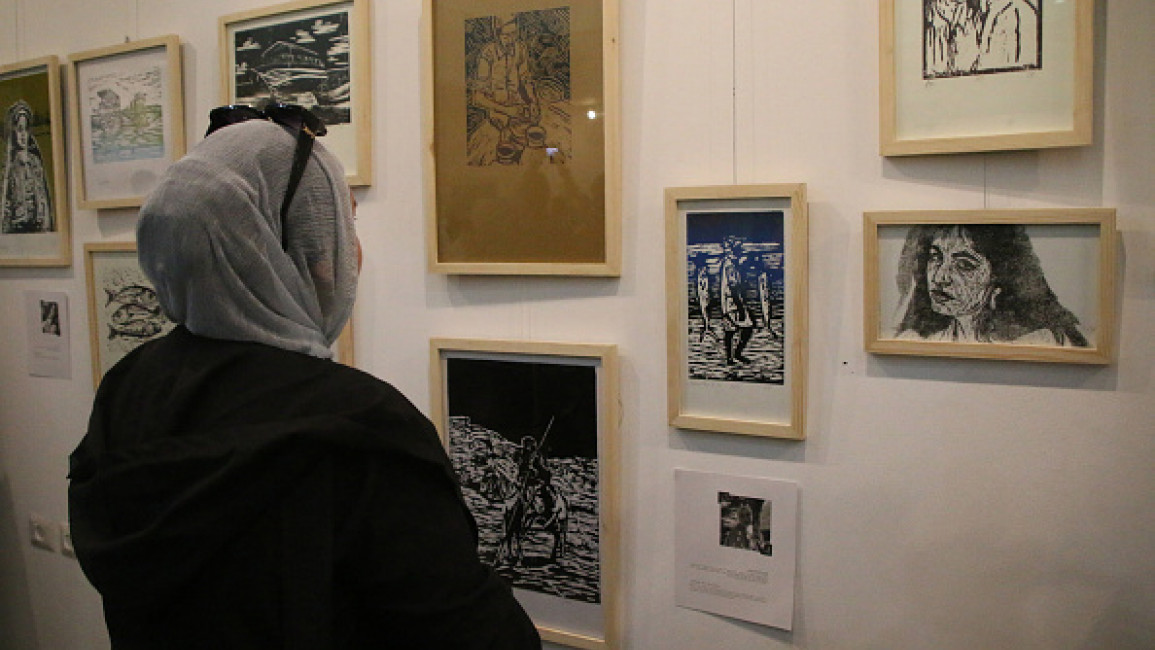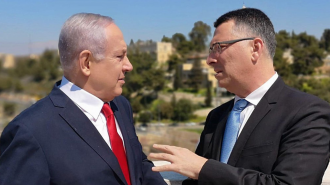Palestinian artists celebrate Gaza's history by shaping plastic
Twenty-eight Palestinian artists from the coastal enclave of Gaza participated in an exhibition that seeks to reflect the history of the besieged Gaza Strip through plastic. The artists shape plastic into works of art or sculptures representing several archaeological sites in the territory.
The Palestinian artists gathered on Tuesday to display about a hundred artworks during an exhibition titled "Fragments of the City." It was held inside the French Cultural Center in western Gaza City.
The artworks were designed using engraving and manual printing of archaeological landmarks in the Gaza Strip and postage stamps used in Palestine during the past eras, in addition to landmarks of ancient public life.
Great Omari Mosque in Gaza City, Al-Sayed Hashem Mosque in the Al-Daraj neighbourhood, Barquq Castle in Khan Yunis, and the historic Al-Zawiya market were among the landmarks represented, and all embodied the history of the Gaza Strip.
"Through our artworks, we are trying to identify the past in the Gaza Strip and the archaeological monuments in light of the changes that the sector is undergoing due to the population density," Mohammed al-Hajj, one of the participating artists, said to The New Arab.
In Gaza, he says, "We have dozens of the archaeological sites that have great value (….) because of the Israeli occupation, most of our archaeological sites lost their position as none of the locals would take care of them."
"We decided to focus on our archaeological sites and to spread awareness among our local people of their history. We send our message to Israel and the international community that we have a history and will keep it for our upcoming generation," he added.
According to an archaeological guide recently issued by the Ministry of Tourism and Antiquities in Gaza, there are about 145 archaeological landmarks in the Gaza Strip.
"The guide contains historical evidence of public life, such as markets, khans, fountains, public baths, Sabata (a narrow-arched corridor between two houses), corners, shrines and archaeological cemeteries," Issam Daalis, the head of the Committee for Follow-up of Government Work in Gaza, said to TNA.
"The guide allocates a detailed space on the history of archaeological sites, both Islamic and Christian, and documents part of the Ayyubid, Mamluk and Ottoman civilisation, in addition to examples of educational and social lifestyles, by studying the history of ancient palaces and you," he said.

![Palestinians mourned the victims of an Israeli strike on Deir al-Balah [Getty]](/sites/default/files/styles/image_684x385/public/2024-11/GettyImages-2182362043.jpg?h=199d8c1f&itok=xSHZFbmc)


![The law could be enforced against teachers without prior notice [Getty]](/sites/default/files/styles/image_684x385/public/2178740715.jpeg?h=a5f2f23a&itok=hnqrCS4x)
 Follow the Middle East's top stories in English at The New Arab on Google News
Follow the Middle East's top stories in English at The New Arab on Google News

![Palestinian journalists in West Bank [Getty]](/sites/default/files/styles/image_330x185/public/2167088057.jpeg?h=a5f2f23a&itok=smdkN-46)
